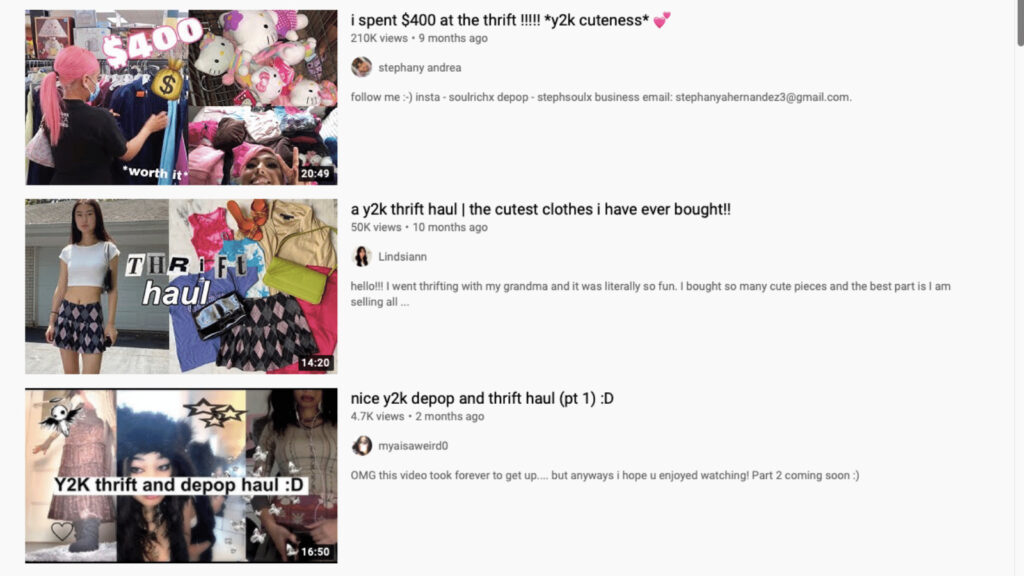Let’s talk about gentrification, shall we ?
Thrift shopping is big thing. We all love good deals. As shopping secondhand became mainstream in mid 2010s, the inferiority surrounding wearing thrifted clothes also shifted.Wearing thrifted clothes and shopping in big bulk has now established its own aesthetic.
Emerging in 2019 to 2020, keyword surrounding sustainability, Y2K-core, vintage aesthetics, have increased by 37% in online searches according to Lyst’s Consumer Fashion Report. Either for environmental motives or opting for affordable clothing, the rise of popularity surrounding thrifted clothes has rebutted the establishment of fast fashion. Association of fast fashion and its short product lifecycles (PLC) and unnerving treatment of their workers have been paid scrutiny. We could find the similarity here; people are no longer willing to tolerate unsustainable brands, be it social or environmental sustainability. Thrifting has become our newest infatuation.
While this behaviour is motivated by the wake of devastation to how workers union and our earth have been treated, latent effects of the rise of thrift shopping should be discussed and contested in a more cognisant manner.
Gentrification of Thrift Stores at The Expense of Those in Needs
The gentrification generally described as the “renovating and rebuilding” of existing sources, moving its utilisation from lower class neighbourhood to middle and upper-class. While at best it may“up-cycle what was denigrated,” it hurts people who actually benefit from it. It is no secret that the increase of demand leads to the riseof price, even when it is secondhand goods.
In a research surrounding economic trends, Raymond James andAssociates stated that thrifting has arisen so significantly that thereafter will buy two times the amount of used clothes over the next four years. Goodwill released their 2020 Valuation Guide, which initially made to help people price their product, shows a significant change of price. Thrifted clothes which are usually priced lower are priced in their original price.
Some clothing articles are also attached to its exclusivity as“branded secondhand clothing,” giving another good reason to riseup the price. It is worth considering, however, that people who resell and rework thrifted goods are providing a different shopping experience and that it is reasonable to crank up their price.

Goodwill and these “small businesses” aren’t directly on par or posing as direct competitors since resellers go through the extent of curating, reworking, shipping, generating content, and many more.However, its effect leads to the lack of wearable options for people who rely on thrift stores as their source of cheaper clothing are taken by people who resell and rework thrifted clothes who come into the equation.
Thrifting : Is It An Environmental Trap ?
Thrift shopping is now no longer about sustainability concern as theconsumption rate still rises. While reselling and reworking thrifted goods decreases the use of virgin materials, the rush to meet“sustainability consciousness” doesn’t encourage the optimizationof using a product to its end-of-use.
As reselling has made more accessible to people who don’t have thrift stores nearby, this behaviour of rebranding thrifted goods as another new aesthetic in trend, resellers also has to deal with shipping and reworking. Shifting another downside of carbonfootprints. Being more cognisant towards the effect of thrift shopping exceeds than just jumping into the bandwagon.
Remember why we scrutinise and criticise fast fashion to begin with and try to reflect whether we are doing the same thing on how we treat thrift shopping these days. Ensuring that people are paid a reasonable wage, still minimising rate of consumption, and minimising carbon footprint are what we need to keep in mind.



